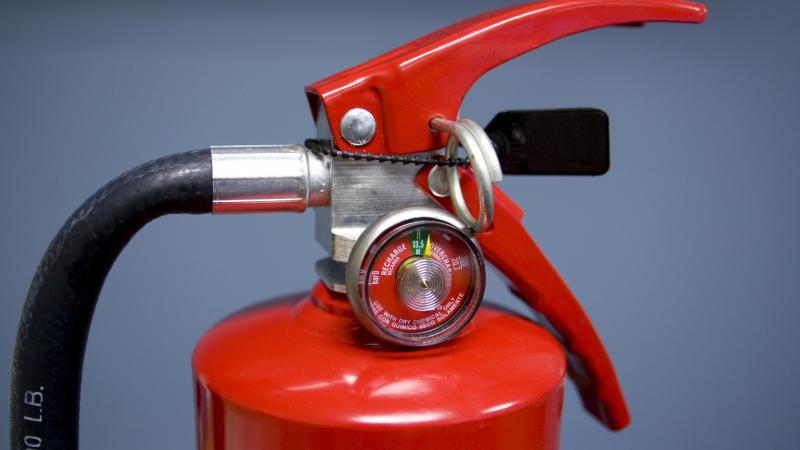Did you know that in Montréal, nearly 80 % of fires are started by accident? Most residential fires start in kitchens or bedrooms and are caused by cooking, smoking or for electrical reasons.
Use a portable fire extinguisher only once everyone has been evacuated, you have called 9-1-1 and you can use it without risk to yourself. Don’t use a portable extinguisher if the room is full of smoke.
With a portable extinguisher, you can :
- Control a fire while it is still small
- Reduce the damage caused by a fire when it first starts
Choose the right type of portable fire extinguisher
There are several different kinds of portable extinguishers available. When buying one for home use, buy a portable extinguisher certified by a recognized organization like Underwriters Laboratories of Canada (ULC).
Choose a dry chemical class « A, B, C » extinguisher. It can be used on different kinds of fires:
- inflammable materials
- flammable liquids or gases
- live electrical equipment
- Read the manufacturer’s instructions
Classes of fire
There are different kinds of fires. They fall into five separate categories.
Installation
- In an accessible location, out of children’s reach.
- On a specially designed holder, at least 10 cm (4 inches) and no more than 1.5 m (5 feet) off the ground.
- The instructions on the label must be clearly visible.
- Do not remove the label or tag showing the last inspection or maintenance date.
- Place your portable extinguisher in clear view, near an exit, far from any potential fire sources like the stove and heating appliances.
Maintenance
You must follow certain maintenance and storage instructions to keep your portable fire extinguisher in good working order. Maintenance instructions may vary depending on the manufacturer and type of portable extinguisher, so we recommend that you refer to the user manual provided by the manufacturer.
- A portable extinguisher must always be accessible, visible and near an emergency exit.
- The pressure meter needle must show sufficient pressure and point to the green range.
- Only those components installed by the manufacturer should be on the extinguisher (seal and pin).
- It is recommended that you visually inspect your portable extinguisher every month (for rust, signs of deterioration, corrosion, etc.).
- Turn the extinguisher upside down and shake it every month to keep the powder in suspension.
- A rechargeable portable extinguisher must be recharged after every use by a specialized firm, even if it has been only partially discharged.
- A single-use portable extinguisher may be kept for six years, and must be replaced after that time.
Use
- Make sure the premises have been evacuated and that it is safe for you to use the extinguisher.
- Call 9-1-1 before attempting to put out a fire with a portable fire extinguisher.
- Stand about 3 metres (10 feet) away from the source of the fire.
- Make sure you have an emergency exit behind you.
- Make sure the extinguisher is full, and pull the pin from the extinguisher.
- Point the spray toward the base of the flames.
- Press firmly on the handle at the top of the extinguisher.
- Sweep the extinguisher from side to side to spray the base of the flames.
- Leave the house, close the door behind you and wait for the firefighters to arrive. No one must be allowed to go back inside.





